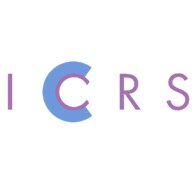Cartilage Damage
Cartilage lesions
Cartilage is a tough, flexible connective tissue present in the body and is responsible for various functions. Articular cartilage covers the surfaces of a joint and reduces the friction between the individual bones and acts as a shock absorber. It supports the joint during weight bearing, through the range of motion needed for daily activities.
Cartilage also provides support to a few organs such as the outer part of the nose and ear, where there is no bone support.
There are three types of cartilage which include elastic cartilage, fibro cartilage and hyaline cartilage.
Elastic cartilage is more supple and flexible and constitutes the outer part of the ear and nose. Fibro cartilages are the toughest cartilages that can support weight and are usually found between the vertebrae of the spine and pelvic bones. Hyaline cartilage, also known as articular cartilage, covers the joint surfaces and ribs.
Cartilage lesions are common injury and mostly affect the articular cartilage. Unlike other tissues, cartilage doesn’t have its own blood supply and that interferes with the repair of the injured cartilage tissues. Thus, healing of the cartilage is not as quick as other tissues.
Causes
Cartilage lesion may result from any sudden impact such as direct blow to the cartilage, any trauma or fracture or fall. Certain contact sports such as football and hockey or athletic activities that require twisting motions increase the chance of a cartilage injury. Another leading cause of cartilage lesion is degenerative changes of the cartilage due to daily wear and tear. Other specific joint diseases or inflammatory diseases of joint such as rheumatoid arthritis can also cause cartilage lesion.
Symptoms
The symptoms of the cartilage lesion depend on the severity of the condition. Patients with cartilage lesion may experience pain, joint stiffness, decreased range of motion or swelling of the affected region. Sometimes the pain may hamper normal activities. In severe cases where a piece of cartilage breaks off or becomes loose, it may affect the movement of the joint or may cause locking of the joint or sometimes the patient may experience a giving way sensation of the joint.
Diagnosis
The diagnosis of a cartilage lesion is quite challenging because it mimics sprain or ligament injuries. Along with physical examination, other advance diagnostic tools such as MRI and arthroscopy may be used to identify the lesion. The strong magnetic fields and radio waves of the MRI may detect cartilage damage. Sometimes it may not locate the exact location and severity of the damage. Arthroscopy is the most effective diagnostic modality that provides a clear view of the lesion. It is a “keyhole surgery” where an arthroscope is inserted through a small incision into the affected joint, to visualize the changes in the joint.
Arthroscopy provides a clear picture of the lesion and helps the physician to determine the extent of the injury. A grading scale may be used to determine the severity of the damage; in this scale zero indicates no damage and four indicates severe damage.
Treatment
The treatment of cartilage lesions may be surgical or non-surgical.
Non-surgical treatment
The non-surgical treatment includes pain relieving medications to relieve the pain and swelling, supportive devices such as a brace or splint and physiotherapy to strengthen the surrounding muscles and support the joint. Lifestyle modifications such as reduction of the activities of the affected joint may help avoid recurrence of the condition.
Surgical treatment
In severe cases of cartilage damage, surgical treatment may be required. The commonly performed surgical procedures include arthroscopic lavage and debridement, marrow stimulation, mosaicplasty, allograft osteochondral transplantation and autologous chondrocyte implantation.







